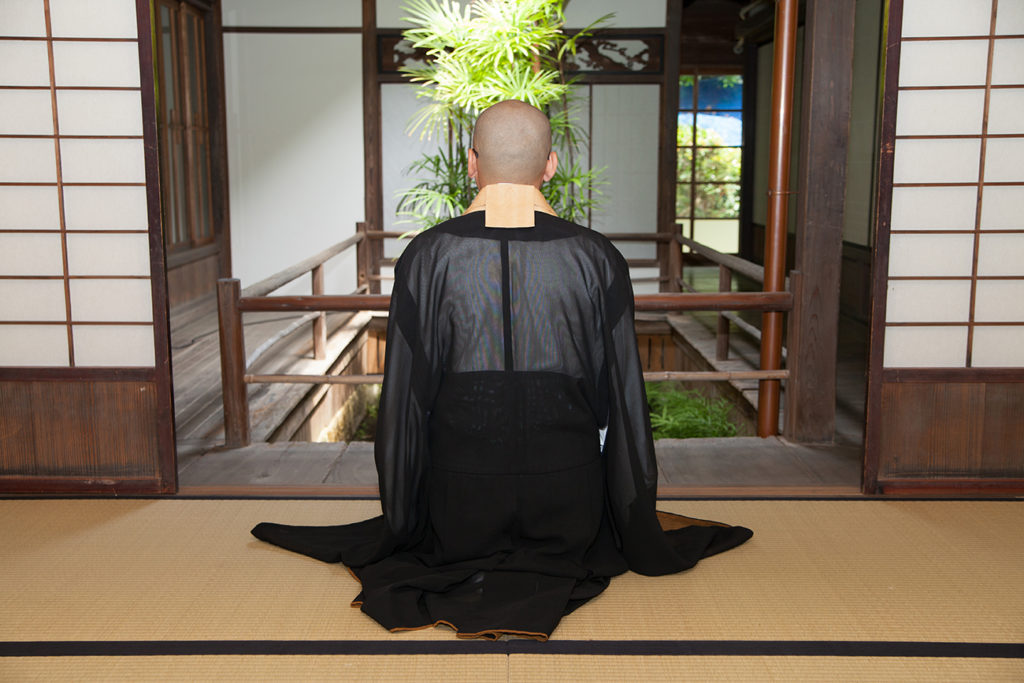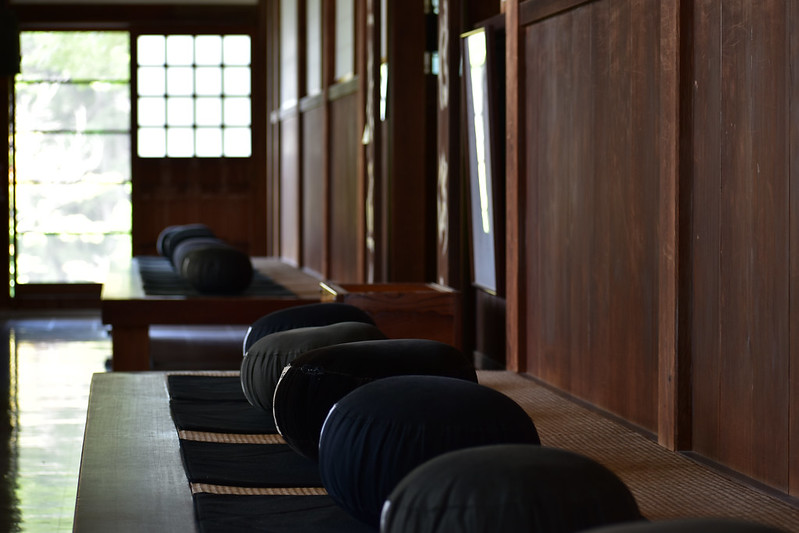
The Art of Zazen
Japanese culture is deeply rooted in Zen, a school of Mahayana (Sanskrit for “Great Vehicle”) Buddhism, one of the main existing branches of Buddhism and a term for classification of Buddhist philosophies and practice. Zen is a practice that was passed on from master to disciple in the purest context known as “uninterrupted bloodline,” believed to have originated from the Awakening of a man named Siddhārtha Gautama, also known as Buddha, in India, some 2,500 years ago. Zazen or “seated meditation” is a meditative discipline in Zen Buddhist practice. The goal of zazen is to just sit and free oneself from all thoughts, words, images, and ideas.
Zendo
A Zendo, or meditation hall.
Thousands of years ago in India, Buddha sought to find the solution to end human suffering. The answer came to him while practicing Zen meditation under a tree, and it was “Enlightenment.” This was the realization that while we possess all that we could ever desire in life, we still often remain unsatisfied. The reason for this is that true happiness doesn’t depend on what we have but on who we are. Buddha’s doctrine, teaching and practice helps us achieve inner peace through zazen.
The practice of zazen meditation is the heart of the Zen Buddhist experience. It is a very simple yet precise method of meditation. Namely:
 Zafu
Zafu
Sitting
Zen monasteries and temples require the tradition where participants sit as a group in a meditation hall usually called a zendo. The practitioner sits on cushion called a zafu that is commonly placed on top of a low, flat mat called a zabuton. Before the participant is seated, he must bow to the seat and to fellow practitioners. The beginning of a period of zazen is traditionally announced by ringing a bell three times (shijosho), and the end of a round is by ringing the bell once or twice (hozensho). Long sessions of zazen are usually alternated with periods of walking meditation (kinhin).
Posture
When practicing zazen, usually one sits with hands and legs folded and spine erect yet settled. The hands are folded together (mudra, a symbolic or ritual gesture) over the belly. The practitioner should breathe from the center of gravity in the belly (hara), with the eyelids half-lowered and neither to be fully opened nor closed to avoid distraction.
The legs can be folded into any of the sitting styles:
Kekkafuza – full-lotus
Hankafuza -half-lotus
Burmese – ankles crossed together in front.
Seiza – a kneeling posture using a bench or zafu.
Mastering zazen is truly an art that, when achieved, can free the mind and body and attain peace.

